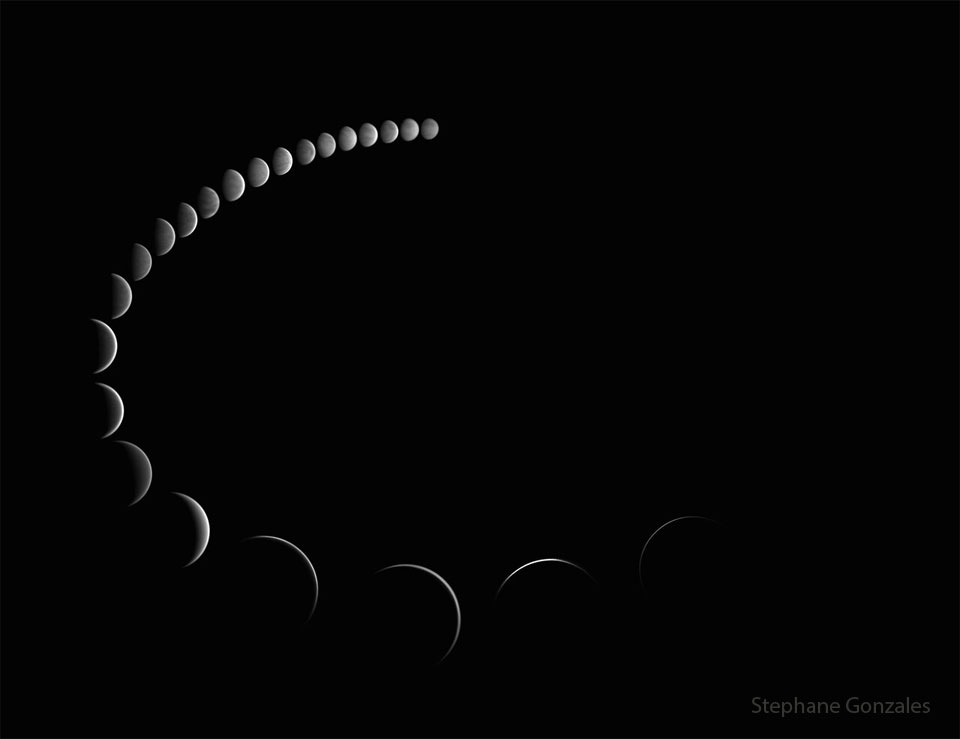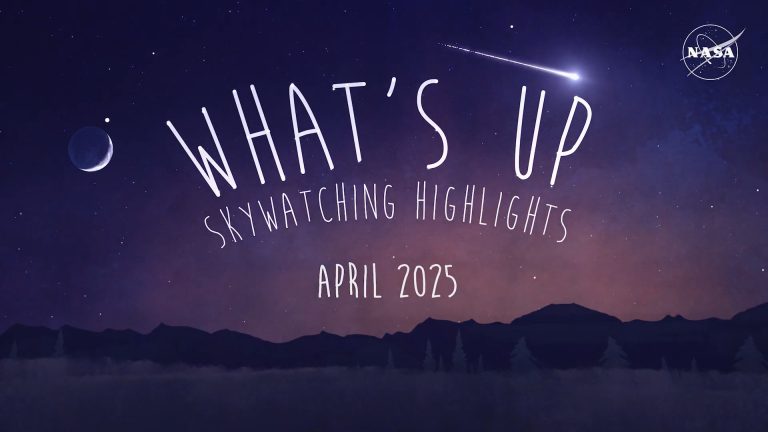2024年1月8日
The Phases of Venus
Image Credit & License: Stéphane Gonzales
Explanation: Venus goes through phases. Just like our Moon, Venus can appear as a full circular disk, a thin crescent, or anything in between. Venus, frequently the brightest object in the post-sunset or pre-sunrise sky, appears so small, however, that it usually requires binoculars or a small telescope to clearly see its current phase. The featured time-lapse sequence was taken over the course of six months in 2015 from Surgères, Charente-Maritime, France, and shows not only how Venus changes phase, but changes angular size as well. When Venus is on the far side of the Sun from the Earth, it appears angularly smallest and nearest to full phase, while when Venus and Earth are on the same side of the Sun, Venus appears larger, but as a crescent. This month Venus rises before dawn in waxing gibbous phases.
Free APOD Lecture: January 9, 2024 to the Amateur Astronomers of Association of New York
Tomorrow’s picture: Thor’s hat
金星的位相
影像提供与授权: Stéphane Gonzales
说明: 金星有位相变化。类似月亮,金星的位相可为圆盘、纤细蛾眉、或介于二者之间的任何形状。金星经常是日落后或日出前天空最明亮的天体,然而它看起来非常小,通常得借助双筒或小望远镜,才得以清楚的见到它目前的位相。这幅在2015年的6个月期间,摄于法国滨海夏朗德省叙热尔镇的主题延时影像,同时呈现了金星的位相与视大小之变化。当金星与地球分别落在太阳的二侧时,金星距离地球最远,其视张角最小,位相也最盈满;当金星与地球位于太阳的同一侧时,金星看起来较大,其位相为蛾眉。这个月以晨星之姿在在黎明前升起的金星,则带着逐渐盈凸的位相。
免费APOD讲座: 2024年1月9日,纽约业余天文学家协会
明日的图片: Thor’s hat







